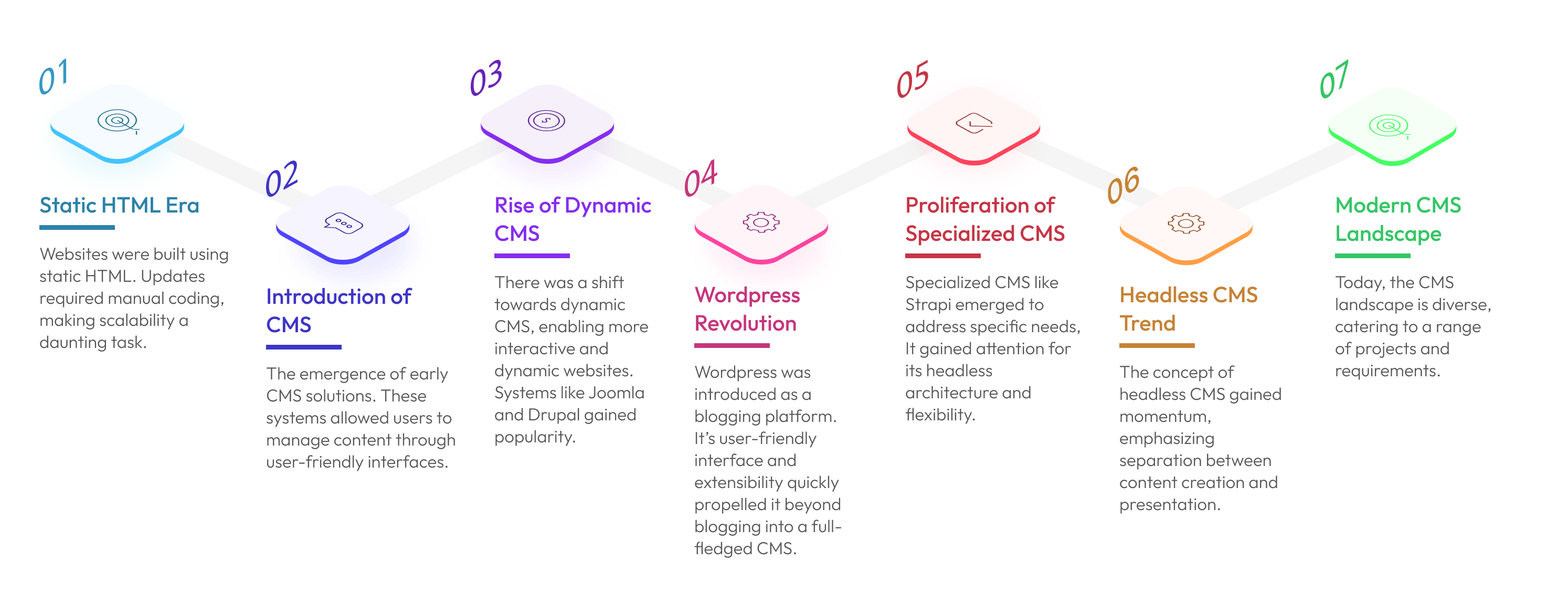Building a website or an application is not an easy task. It requires careful planning, design, development, testing, and deployment. One of the most important decisions you need to make is selecting the best content management system (CMS) for your project. A CMS is software to create, manage, and publish content on your website or application. It can also provide various features and functionalities to enhance your web development process.
Many CMS options are available in the market, each with its pros and cons. However, two of the most popular and widely used CMS are WordPress and Strapi. WordPress is the most widespread CMS in the world, powering over 40% of all websites. Strapi is a relatively new CMS that has gained a lot of attention and traction in recent years, especially among developers who prefer a headless approach.
This blog post will compare WordPress and Strapi to help you determine which one is the best fit for your web development project.
Before delving into the topic, let's understand the evolution of the content management system.

WordPress is the most popular and widely used CMS in the world. It was pitched in 2003 as a blogging platform but has evolved over the years to become a powerful and versatile CMS that can handle any type of website or application. WordPress is an open-source software to use, modify, and distribute content for free. It is also supported by a large and active community of developers, designers, and users who contribute to its development and improvement. Some of the core features and strengths of WordPress are
Strapi is a relatively new CMS that has gained a lot of attention and traction in recent years, especially among developers who prefer a headless approach. Strapi was launched in 2016 as an open-source project and became a company in 2019. Strapi is a headless CMS that only focuses on managing your content and lets you use any technology you want to display on the front end, such as React, Angular, Vue, etc. Some of the notable features and advantages of Strapi are

When it comes to choosing between WordPress and Strapi for web development, the decision often depends on specific requirements and preferences. Let's delve into the strengths of each platform:
Some real-world examples of websites that use WordPress are:
Some real-world examples of websites that use Strapi are:
After exploring WordPress and Strapi, you may have a better idea of their strengths and weaknesses and how they fit your project requirements. However, you may still need to weigh some factors and criteria to make a final decision. Some of the factors are:
Choosing between WordPress and Strapi is not an easy task, as both are powerful and versatile content management systems that can handle any type of website or application. However, by understanding your project requirements, exploring WordPress and Strapi, and weighing some decision-making factors, you can make an informed and confident decision. Ultimately, the best CMS for your web development project is the one that meets your requirements and priorities and helps you achieve your goals and objectives.
For those seeking a guiding hand through this decision-making journey, we stand as a beacon of expertise in app and web development. Our seasoned professionals understand the nuances of both WordPress and Strapi, developing solutions that transcend the ordinary.
View our portfolio to learn more about how we help grow our clients' businesses.
Email: connect@evoqins.com

Get weekly update about our product on your email, no spam guaranteed we promise ✌️